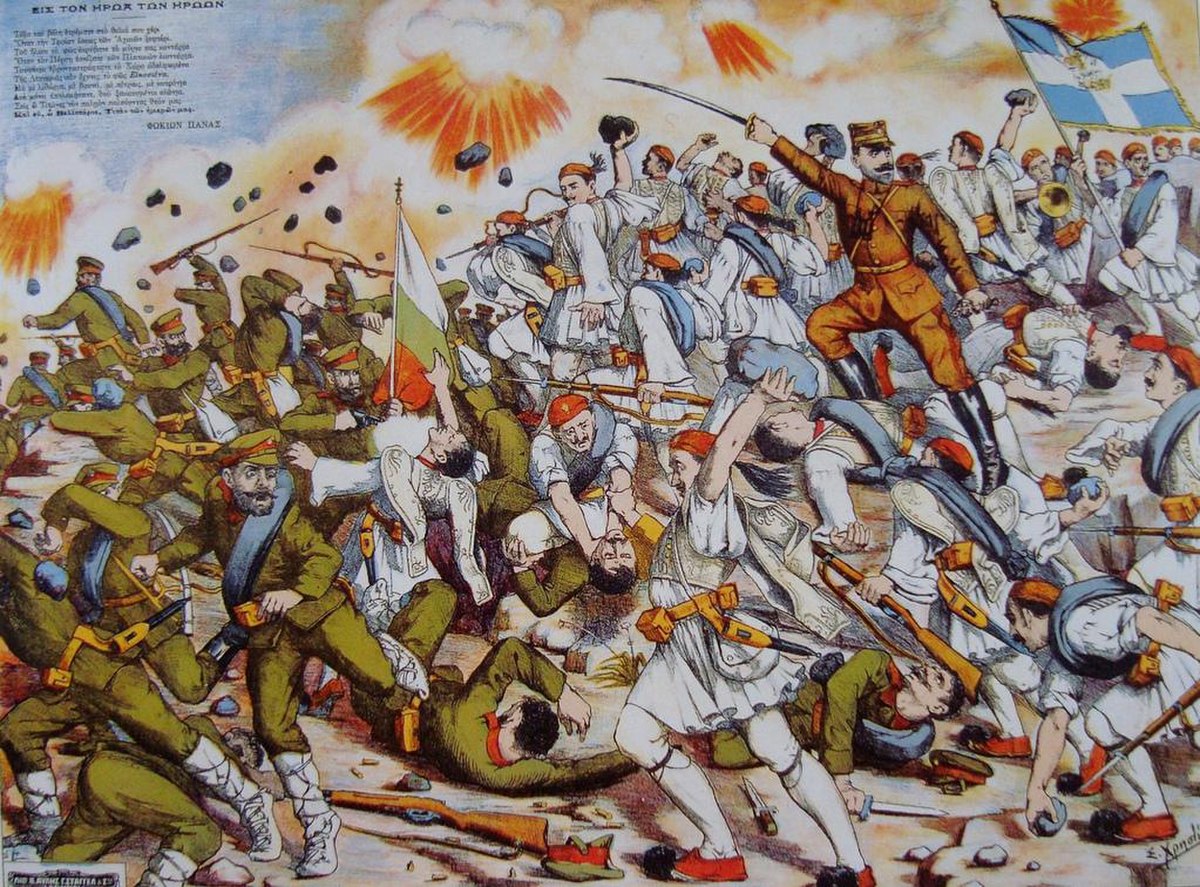
Battle of Kresna Gorge
Kresna Gorge, BulgariaGreek advance and breaking through the Kresna Pass
After the victorious Battle of Doiran the Greek forces continued their advances north. On 18 July, the 1st Greek Division managed to drive back the Bulgarian rear guard and captured an important foothold at the southern end of the Kresna Pass.[80]
In the pass, the Greeks were ambushed by the Bulgarian 2nd and 4th Armies which were newly arrived from the Serbian front and had taken up defensive positions. After bitter fighting, however, the Greeks managed to break through the Kresna Pass. The Greek advance continued and on 25 July, the village of Krupnik, north of the pass, was captured, forcing the Bulgarian troops to withdraw to Simitli.[81] Simitli was captured on 26 July,[82] while during the night of 27–28 July the Bulgarian forces were pushed north to Gorna Dzhumaya (now Blagoevgrad), 76 km south of Sofia.[83]
Meanwhile, the Greek forces continued their march inland into Western Thrace and on 26 July, entered Xanthi. The next day the Greek forces entered Komotini, without incurring Bulgarian opposition.[83]
Bulgarian counterattack and armistice
The Greek army was stopped in front of Gorna Dzhumaya by significant Bulgarian resistance.[84] On 28 July, Greek forces resumed the attack and captured a line stretching from Cherovo to Hill 1378, southeast of Gorna Dzhumaya.[85] During the evening of 28 July, however, the Bulgarian army under heavy pressure was forced to abandon the town.[86]
The following day, the Bulgarians attempted to encircle the outnumbered Greeks in a Cannae-type battle by applying pressure on their flanks.[87] Nevertheless, the Greeks launched counterattacks at Mehomia and to the west of Kresna. By 30 July, the Bulgarian attacks had largely subsided. On the eastern flank, the Greek army launched an attack towards Mehomia through the Predela Pass. The offensive was stopped by the Bulgarian army on the eastern side of the pass and fighting ground to a stalemate. On the western flank, an offensive was launched against Charevo Selo with the objection of reaching the Serbian lines. This failed and the Bulgarian army continued advancing, especially in the south, where by 29 July the Bulgarian forces had cut the Greek line of retreat through Berovo and Strumica, leaving the Greek army with only one route of retreat.[88]
After three days fighting at the sectors of Pehčevo and Mehomia, however, the Greek forces retained their positions.[85] On 30 July, the Greek headquarters planned to launch a new attack in order to advance towards the sector of Gorna Dzhumaya.[89] On that day hostilities continued with the Bulgarian forces deployed on strategic positions north and northeast of the town.
Meanwhile, King Constantine I, who had neglected a Bulgarian request for truce during the drive for Sofia, informed Prime Minister Venizelos, that his army was "physically and morally exhausted" and urged him to seek cessation of hostilities[87] through Romanian mediation. This request resulted in the Treaty of Bucharest being signed on 31 July 1913 which ended one of the bloodiest battles of the Second Balkan War.
